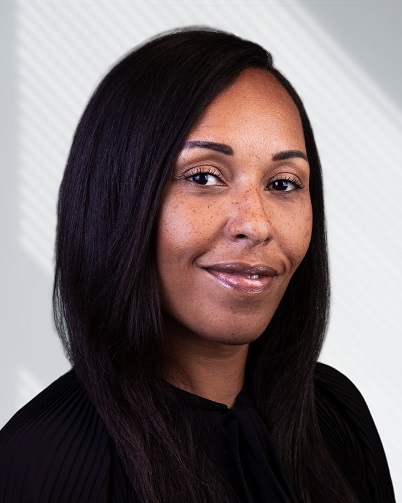Determining your company’s next big move can feel like a guessing game: Is there demand for a new product? How will a rebrand affect profit margins? What do consumers value most? Fortunately, you can take the guesswork out of business with first-party panel data: quantitative information derived from groups of pre-qualified consumers.
Understanding first-party and panel data
Brands and businesses utilize panel data as a part of their first-party data collection strategy to gain in-depth knowledge about their target audience. By engaging with panellists, companies can obtain direct insights from their customers, allowing them to create highly targeted and personalized marketing campaigns, understand changing consumer preferences, and improve their products or services.
What is first-party data?
First-party data encompasses the information collected directly from individuals or customers who have interacted with a business or brand. It includes valuable details such as demographic information, behavioral patterns, preferences, and other relevant data. The authenticity and reliability of first-party data make it a powerful resource for businesses to understand their customers better and make data-driven decisions.
What is panel data and how is it collected?
Panel data is a specific type of first-party data that involves quantitative information collected from reported answers of market research panellists. These panellists are individuals who willingly participate in surveys or studies conducted by businesses to gain insights into consumer behavior, preferences, and opinions. The panel data includes profiling information, such as demographics (age, gender, education level), household data (income, household size, expenses), and behavioral data (hobbies, travel preferences, media consumption habits).
What is a market research panel?
A market research panel is a group of individuals who have agreed to take part in online surveys. Depending on a company's goal, these surveys can offer meaningful insight into a growing market, brand health, advertisement messaging, or consumer perceptions of a specific product. Companies are then able to use this information to make key business decisions.
For example, an athletic apparel company may use panel data to monitor brand health over a set period of time. In doing so, the company can better understand how consumers are responding to products and brand messaging, as well as better understand growing markets.
When and why do brands collect first-party panel data?
Typically, brands conduct market research over time and for ad hoc reasons. For example, that same apparel company might survey panels monthly to understand a growing market over time. They might also run a concept test to gauge consumer opinion or appetite for a product before they develop it. As such, a market research panel yields two different types of data: cross-sectional and time series.
Cross-sectional data refers to the observations of panellists at a given time. For instance, the opinions a group of consumers have about fashion trend style in summer 2022. Comparatively, time series data looks at how those opinions change.
What is first-party panel data used for?
Whether your company is hoping to launch a new service or reposition its brand, first-party panel data is an invaluable tool. This information allows businesses to understand customers, receive product insights, and study market trends over time.
Understanding consumers
First-party market research panels allow brands to conduct research that offers a more intimate and comprehensive look at what motivates specific types of consumers.
For example, a wellness brand may use a market research panel to gauge how consumers respond to different advertisements. In doing so, the brand can determine which type of messaging will be most effective.
Product insights
Likewise, first-party panel data helps brands understand how consumers make product selections and why.
For instance, a coffee roaster may seek to understand how much pricing affects purchasing behaviour. To do so, the brand conducts a survey with panellists that assesses their willingness to buy various brands based on various factors, price being one. The subsequent data can inform future pricing decisions.
Market trends
As previously noted, market research panels afford two different types of data: cross-sectional and time series. The latter allows brands to study how consumer opinions have evolved over time. Using this information, brands can make confident projections about how purchasing behaviour may change in the future.
Consider this scenario: A food delivery service has sent surveys to market research panellists every six months for the past ten years. The survey questions pertain to brand perceptions and awareness. Using this longitudinal data, the food delivery service can analyse brand health and better seize opportunities to expand business.
How to conduct market research and collect high-quality first-party panel data
In summary, panel data can give businesses the insights needed to optimise performance and outpace the competition. However, collecting high-quality panel data requires a detailed, methodical approach.
Step 1: Identify your target audience
Before you analyse consumer behaviour, you must determine exactly who these consumers are. In crafting a buyer persona, you may consider evaluating key characteristics like:
- Age
- Gender
- Location
- Household income
- Occupation
- Hobbies
You may find that your brand caters to more than one buyer persona. This is common. Simply ensure that each persona is detailed.
Step 2: Find a market research partner
Navigating the world of market research can be overwhelming, especially if you are attempting to launch a start-up or rebrand a well-established company. It can also be incredibly time-consuming and expensive to aggregate a sample of consumers that is representative of your target audience. And with critical business decisions being made based on research results, it’s imperative the data collected is of the highest quality. Fortunately, a market research partner can save your brand time and money while providing holistic insights.
Kantar’s Profiles division, for example, offers dynamic access to an exclusive network of 170m+ research-ready respondents across 100 global markets. This unparalled panel reach, paired with industry-leading ant-fraud technology and survey engagement tools, makes Kantar the trusted source for the most meaningful data.
Step 3: Create the survey
Perhaps the most crucial step of market research is designing the survey. Quality data starts with good survey designs. Surveys that aren’t engaging, are too long, or difficult to understand or answer can result in poor-quality data, rendering your efforts wasted. Fortunately, Kantar has a wealth of resources on survey design best practices.
- 11 survey design best practices to increase effectiveness
- Get the best survey data by choosing the right question type
- What is a good survey length for online research?
- How to get a representative audience for your online surveys
- 7 survey design mistakes that hurt the quality of your data
Step 4: Determine your audience and sample size
Next, you must determine your audience and sample size. Are you looking to survey a nationally representative audience, or a targeted group? You also need to determine any necessary quotas for your analysis and the amount of people needed for each quota group.
The key here is to arrive at a survey sample that is large enough for the resulting data to be ‘statistically significant’ for everything you plan to analyse. To do this, you must first calculate your overall market size, desired confidence level, and margin of error. From there, you can calculate the sample size by using an online calculator.
Step 5: Validate panellists
Before you launch a survey, trust that your research partner uses the right quality tools to properly validate panellists who are real, and are who they say they are. Kantar’s Profiles division uses 10+ unique and rigorous quality checks and includes our proprietary and industry-leading anti-fraud technology- Qubed. It identifies more real fraud faster, and trains people with poor respondent behaviour to provide honest feedback and become better panellists.
This ensures that your data is valid and reliable, allowing your brand to make informed business decisions.
Step 6: Survey launch
The last step is to launch your survey. Be sure your research partner takes the steps to closely monitor fieldwork to properly fill your needed quotas. And if you’re conducting any kind of tracking or longitudinal research, that the blend of sources they use is consistent over time. This ensures that your data is stable and reliable wave after wave – for trusted insights.
Collect high-quality first-party panel data with Kantar Profiles
Panel data can help brands better understand consumers, refine products and services, and study market trends. However, collecting this data can be tedious and labour-intensive even for the most established companies.
Fortunately, Kantar delivers quality data in a way that works you by offering:
- A network of 170m+ panellists across 100+ markets – for global reach and local relevance
- Industry-leading quality checks – ensuring real, engaged panellists
- Proprietary survey programming tools designed and tested to increase engagement
- Project teams with decades of experience blending panel sources for stable data
- A wide range of survey solutions – from DIY, to templated solutions, to fully managed research
Learn more about how Kantar Profiles can revolutionise your brand.


